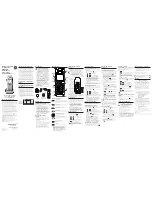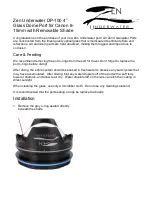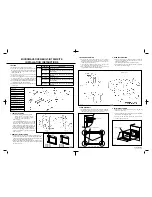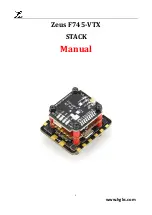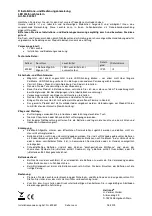
4
Publication No: EN-GAZ-Standard-IOM 001 Dec 2012
5.2 Electrolyte check and topping
up
Check the electrolyte level and never let
the level fall below the lower level mark
“MIN”. Use only distilled or deionized water
to top-up the cells in accordance with IEC
60993. Experience will tell the time interval
between
topping-up.
Refilling
with
electrolyte is only permissible if spilled
electrolyte has to be replaced. If during
refilling or topping up electrolyte has been
splashed onto the cell cover or between
the cell cases, clean this off and then dry
the area.
NOTE: Once the battery has been
filled with the correct electrolyte
either at the factory or during the
battery commissioning, there is no
need to check the electrolyte
density periodically. Interpretation
of density measurements is difficult
and
could
lead
to
misunderstandings.
5.3 Replacing of electrolyte
In
most
stationary
applications
the
electrolyte will retain its effectiveness for
the total lifetime of the battery. However,
under special battery operating conditions,
if the electrolyte is found to be carbonated,
the battery performance can be restored by
replacing
the
electrolyte.
Only
use
genuine electrolyte!
It is recommended to change the
electrolyte when reaching a carbonate
content of 75 g/litre. It is possible to test
the electrolyte in the manufacturer’s
laboratory. For this, a minimum quantity of
0.2 litres of electrolyte in a clean glass or
polyethylene container should be sent in,
paying strict attention to the valid
dangerous goods regulations. The sample
of electrolyte should be taken half an hour
after charging has ended and from several
cells of the battery. Do not take the
samples immediately after topping up. The
electrolyte sample and the cells should be
closed immediately after the electrolyte has
been taken.
CAUTION – caustic potash solution is
highly corrosive!
5.4 Electrolyte temperature
The temperature of the electrolyte should
never
exceed
45
°C
as
higher
temperatures have a detrimental effect on
the function and duration of the cells. In the
course of charging, aim for an electrolyte
temperature of ≤ 35 °C. On exceeding
45 °C the charging should be temporarily
interrupted until the electrolyte temperature
falls down to 35 °C. The temperature
measurements are to be made on one of
the cells in the middle of the battery. Low
ambient or electrolyte temperatures down
to –25 °C do not have any detrimental
effect on the battery. They just cause a
temporary reduction in capacity.
6. Additional Warning notes
NiCd batteries must not be installed or
stored in the same room as lead acid
batteries. In addition to this, the charging
gases from lead acid batteries must be
kept away from Ni-Cd batteries by suitable
precautions such as ventilation or hermetic
isolation of the rooms. Tools for lead acid
batteries must not be used for NiCd
batteries.
Do not place electrically conductive objects
such as tools, etc. on the battery!
Risk of short circuit and fire!
No rings or metal bracelets should be worn
during the assembly of the battery –
Risk
of injury!
Open the doors of the battery cabinet
during charging so that the charging gases
can escape. The charging gases from
batteries are explosive. Do not allow open
fire or ember in the vicinity of the battery!
Risk of explosion!
Caution
–
potassium
hydroxide
(KOH)
solution is highly corrosive!
Potassium hydroxide (KOH)
solution is
used
as
electrolyte.
Potassium
hydroxide (KOH)
solution is a highly
corrosive liquid which can cause severe
damage to health if it comes into contact
with the eyes or the skin (risk of blinding). If
even small quantities are swallowed there
is a possibility of internal injuries.
When working with electrolyte and on
cells / batteries rubber gloves, safety
goggles with side guards and protective
clothing must always be worn
!
Contact with the eyes:
Flush out
immediately with abundant amounts of
water for 10 – 15 minutes. If necessary
consult an eye clinic.
Contact with the skin:
Remove splashed
clothing immediately and wash the affected
skin areas with abundant amounts of
water. For any discomforts consult a
doctor.
Swallowing:
Rinse out the mouth
immediately with abundant amounts of
water and keep drinking large amounts of
water. Do not provoke vomiting. Call an
emergency doctor immediately.
In the event of injuries:
Rinse thoroughly
for a long period under running water.
Consult a doctor immediately.





